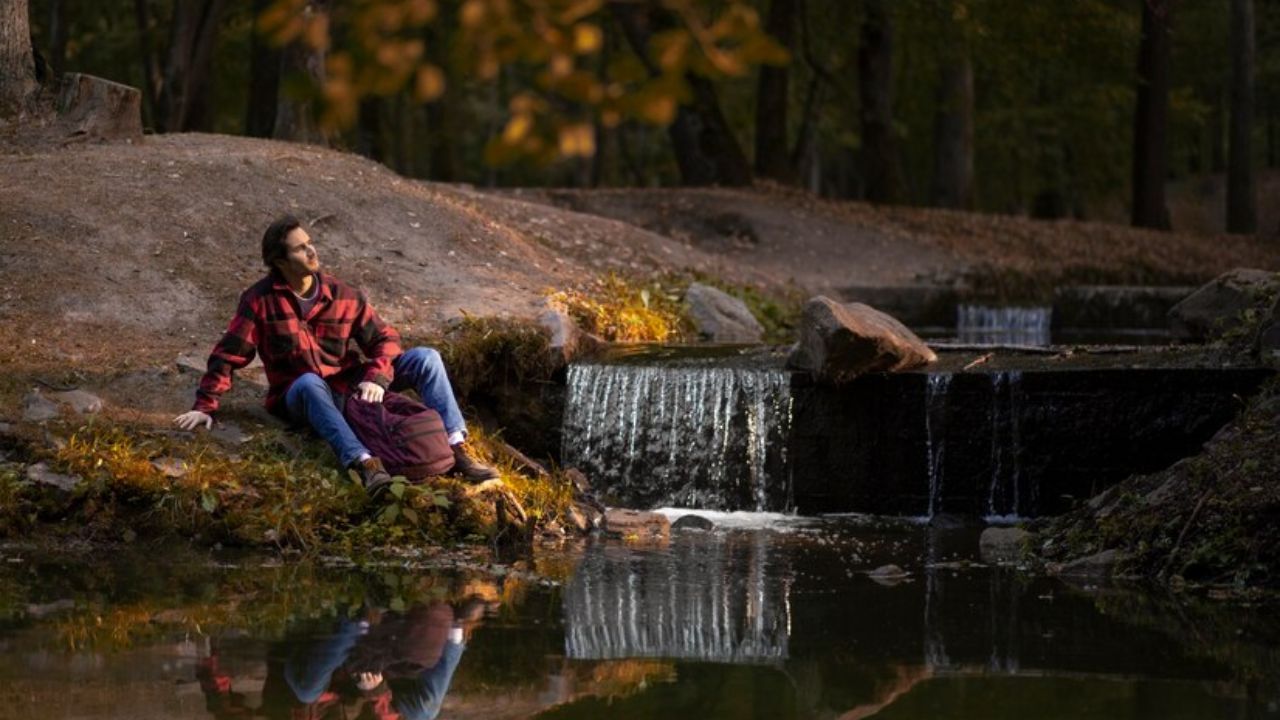Ruisseau d’Avenelle: A Hidden Jewel of Gourmet Heritage
Welcome to a place where taste tells tales and every aroma stirs the soul—Ruisseau d’Avenelle, a lesser-known yet enchanting destination steeped in culinary mastery. Tucked within the scenic embrace of a lush French countryside, this tranquil hamlet thrives not just on tradition, but on the celebration of gourmet heritage passed down like whispered secrets across generations.
More than a place it’s a flavor, a rhythm, and an experience that rewards the curious and delights the refined palate. This article is your immersive guide to discovering every delectable thread of this gastronomic gem.
Table of Contents
ToggleEnchanting Hamlet
Imagine a place where rivers hum gentle tunes, stone houses cradle time’s touch, and kitchens brim with the smell of simmering stock and crusty bread. Ruisseau d’Avenelle is that place a hidden jewel of gourmet heritage, untouched by commercial tourism and reverberating with authenticity.
Its cobbled lanes and vine-draped terraces lure food enthusiasts, not with flashing signs, but with the aroma of heritage meals cooked in cast iron pots and wood-fired ovens.
The Etymology and Meaning Behind “Ruisseau d’Avenelle”
In French, “ruisseau” translates to brook—a small, meandering stream. “Avenelle” is believed to stem from old dialects referring to “little havens” or even “wild oats.” Together, the name paints a picture of serene waters and fertile grounds, poetic and precise—just like its cuisine.
Locating the Culinary Pearl: Where is Ruisseau d’Avenelle?
Geographically nestled in one of France’s most pastoral regions—somewhere between Normandy’s dairy-rich pastures and the vineyards of the Loire Valley—Ruisseau d’Avenelle thrives away from major roads. It is accessible, yet purposefully tucked away.
The isolation, rather than stifling, protects the region’s culinary identity, shielding it from homogenization and keeping tradition intact.
A Brief History of Ruisseau d’Avenelle
This culinary haven didn’t spring up overnight. Historical records trace it back to medieval times, when monasteries cultivated herbs and taught locals the fine art of preserving meats and fermenting produce. In time, traveling nobility discovered its charm, and chefs brought regional dishes into royal kitchens. This blend of rural ingenuity and noble curiosity birthed a cuisine that is equal parts rustic and refined.
The Role of Terroir in Culinary Culture
Terroir—a term often used in winemaking—describes how geography, climate, and soil influence taste. In Ruisseau d’Avenelle, terroir is gospel.
From the lush meadows feeding dairy cows to the mineral-rich soil nurturing heirloom carrots, the land’s character imprints itself on every ingredient. It’s why a tomato here doesn’t taste like a tomato anywhere else. It tastes like history and home.
Time-Honored Traditions: Recipes Passed Down Through Generations
In Ruisseau d’Avenelle, recipes are not just culinary blueprints; they’re treasured heirlooms. Passed down from grandmothers to grandchildren, these meals capture not just flavors but emotions. From a slow-cooked coq au vin that simmers over open fire for hours to delicate berry tarts with crusts folded just so, the village cuisine is infused with deep familial reverence.
The act of cooking is meditative here. Each herb is picked with purpose, every simmer observed with care. Recipes come with stories, legends even—of harvest feasts, of meals cooked to comfort during winters, and of courtships that began over a shared stew.
Signature Dishes That Define the Region
Every culinary capital has its stars—and Ruisseau d’Avenelle is no exception. The regional specialty, Ragoût d’Avenelle, is a slow-braised stew blending duck, root vegetables, red wine, and wild juniper berries. It’s earthy, robust, and incredibly local.
Also popular is Flan de Forêt, a forest-inspired custard dessert layered with honeyed pine nuts, wild blueberries, and cream infused with rosemary. The dish is served cool, often accompanied by a black walnut liqueur made by a local distiller.
What sets these dishes apart is not just the ingredient list but the way they embody local identity—unrushed, complex, and in harmony with nature.
The Cheese Chronicles: Fermented Artistry at Its Finest
Cheese-making in Ruisseau d’Avenelle is practically a religion. With grass-fed cows and a process that respects centuries of artisan wisdom, the village is home to varieties that rarely leave the region.
Take Avenelle Bleu, a blue cheese with delicate marbling and a surprisingly sweet aftertaste. Or Chêne Blanc, an aged goat cheese wrapped in oak leaves and cured in mountain cellars. Locals know when to cut the rind, how to pair each slice, and which wine brings out their best notes.
Every market stall, farmhouse, and tavern has its own cheese tale—each wheel a diary of the land.
Artisan Bread and Stone-Oven Baking Secrets
Bread here is more than a meal’s sidekick—it’s the crunchy, fragrant cornerstone of the village’s soul. Baked in wood-fired ovens that crackle from dusk till dawn, each loaf—whether it’s crusty sourdough, walnut rye, or honeyed brioche—tells of age-old leavening techniques.
Local bakers use wild yeast cultures, nurtured over generations. The loaves are hand-scored with family symbols, often a leaf or a swirl. Nothing here is rushed. Doughs rise for hours, sometimes overnight, under linen cloths as the wood ovens are prepped with beech logs.
Farm-to-Table in Its Purest Form
There is no distance between farm and fork in Ruisseau d’Avenelle. Chickens roam freely, eggs are gathered daily, and produce is plucked only when the morning dew has dried. The region doesn’t advertise “organic”; here, natural is just normal.
Many homes have small gardens, and even the local inns source milk, herbs, and berries from their backyards. Restaurants don’t print menus in advance because they cook what they harvest. Eating out means surrendering to the land’s rhythm, and diners wouldn’t have it any other way.
Local Markets: The Pulse of Authentic Cuisine
Every Thursday and Sunday, the cobbled square comes alive with the bustle of the marché du terroir. Here, farmers bring fresh mushrooms, herbalists hawk medicinal teas, and cheese wheels roll from carts with joyful abandon.
It’s not just shopping—it’s community theater. Locals gather, taste, barter, and laugh. Children run with warm baguettes, and chefs discreetly procure wild herbs and forest honey.
Wine, Orchards, and the Harvest Seasons
Though not a commercial wine region, Ruisseau d’Avenelle boasts exceptional micro-vineyards. The slopes surrounding the village nurture grapes like Pinot Gris and Gamay, yielding light-bodied wines that surprise with notes of clove, fig, and thyme.
Autumn is especially magical. The Vendange d’Avenelle, or local harvest, becomes a festival of labor and joy. Families gather to pick, crush, and ferment under the fading summer sun. Children stomp grapes, musicians play violins, and grandmothers pour the year’s first cider.
Michelin Memories: Gourmet Recognition Beyond Borders
Though Ruisseau d’Avenelle remains humble, its culinary excellence hasn’t gone unnoticed. Renowned guides have praised its boutique inns and chef-owned bistros. One particular eatery, La Table Silencieuse, earned a Michelin star for its innovative tasting menu using only local produce.
International chefs have taken pilgrimages here, often staying to learn the rhythms of seasonal, sustainable cooking. Despite accolades, the village maintains its humility—never chasing stars, but always guided by the light of authenticity.
Ruisseau d’Avenelle Through the Eyes of Chefs
Local chefs are not celebrities here—they’re guardians of the land’s flavor. Chef Emilie Dravet, a third-generation culinary artist, describes cooking as “translating the voice of the earth into a language the stomach understands.”
Her signature dish, Chestnut Velouté with Caramelized Leeks, mirrors this ethos. It’s simple, yet profound, much like the village itself. Another chef, Jean-Benoît Claudel, offers seasonal mushroom risottos and trout grilled over wild herbs, always paired with homemade fig vinegar.
Conclusion
Ruisseau d’Avenelle is not a place you stumble upon; it’s a destination your heart whispers you toward. Its gourmet legacy is more than a boast—it’s a living, breathing tradition nourished by earth, time, and love. Each bite, each story, each stone path is an invitation to slow down and taste life more deeply.
So if you’ve ever dreamed of a place where food heals, tradition endures, and taste becomes memory—Ruisseau d’Avenelle is calling.
FAQs
Where is Ruisseau d’Avenelle located?
It’s nestled in a pastoral region of France between Normandy and the Loire Valley—secluded yet accessible.
Is it tourist-friendly?
Yes, but it resists commercialization. Visitors are welcome, but the focus remains on authentic experiences, not tourism.
What is the best time to visit?
Autumn (September–October) is ideal, coinciding with the grape and apple harvests, and local culinary festivals.
Are there vegetarian or vegan options?
Yes! The abundance of fresh produce and grains means plant-based meals are both delicious and widely available.
Can I learn cooking in Ruisseau d’Avenelle?
Absolutely. Local chefs offer immersive workshops in bread-making, cheese-aging, and traditional cooking.
What souvenirs can I take home?
Hand-pressed walnut oil, artisan cheese, herbal salts, wildflower honey, and hand-stitched kitchen linens.







